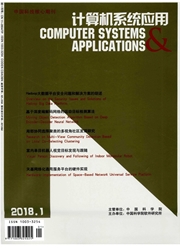

 中文摘要:
中文摘要:
通过分析传统信息系统的抗毁理论,提出了评价 MANET网络抗毁性能的关键指标 DRUA(delivery rate under attack),并基于空间概率的方法给出了该评价指标的数学模型.为了验证模型,利用NS2仿真环境对 MANET反应式路由协议进行了随机打击、蓄意打击等多种毁伤方式的抗毁性实验.实验结果表明在CBR(constant bit rate)流数较小的情况下,随机毁伤对 MANET性能影响较小,甚至反而使得性能提升.但是,在CBR流数较大的情况下,随机毁伤会导致性能下降.而采用随机毁伤邻居节点的方法在CBR流数小的情况也会使得 MANET性能下降.
 英文摘要:
英文摘要:
Through analyzing the survivability theory of traditional information system,this paper puts forward an important index named DRUA(delivery rate under attack) to evaluate the MANET survivability,and an evaluation formula for this index is also provided based on the theory of space probability.In order to verify the formula,some experiments are conducted by using NS2 simulation tools.In these experiments,the famous reactive routing protocol AODV is selected as the communicating protocol.Other reactive routing protocols are designed similar as AODV,which has better performance.At the same time,three kinds of attacking scenes are designed for comparison(they are random attacking,deliberate attacking and randomly neighbor attacking).The experimental results show that when the number of CBR flows is comparatively small,random attacking and deliberate attacking have little negative effect on the performance of MANET or even can improve the performance of MANET.On the contrary,when there are a large number of CBR flows in the case of large-scale MANET,random attacking can greatly influence the performance of MANET in a negative way.This means the evaluation formula is more suitable for large-scale MANET.In addition,randomly attacking neighbor nodes can reduce the performance obviously even when there are a small number of CBR flows.
 同期刊论文项目
同期刊论文项目
 同项目期刊论文
同项目期刊论文
 期刊信息
期刊信息
